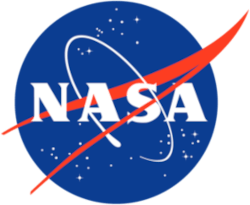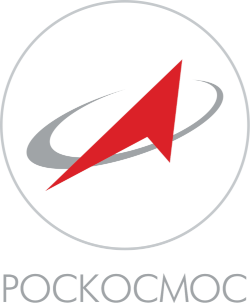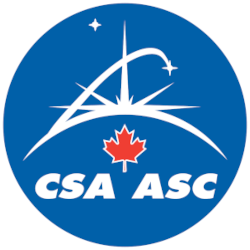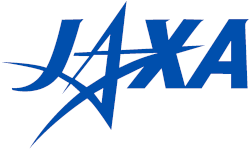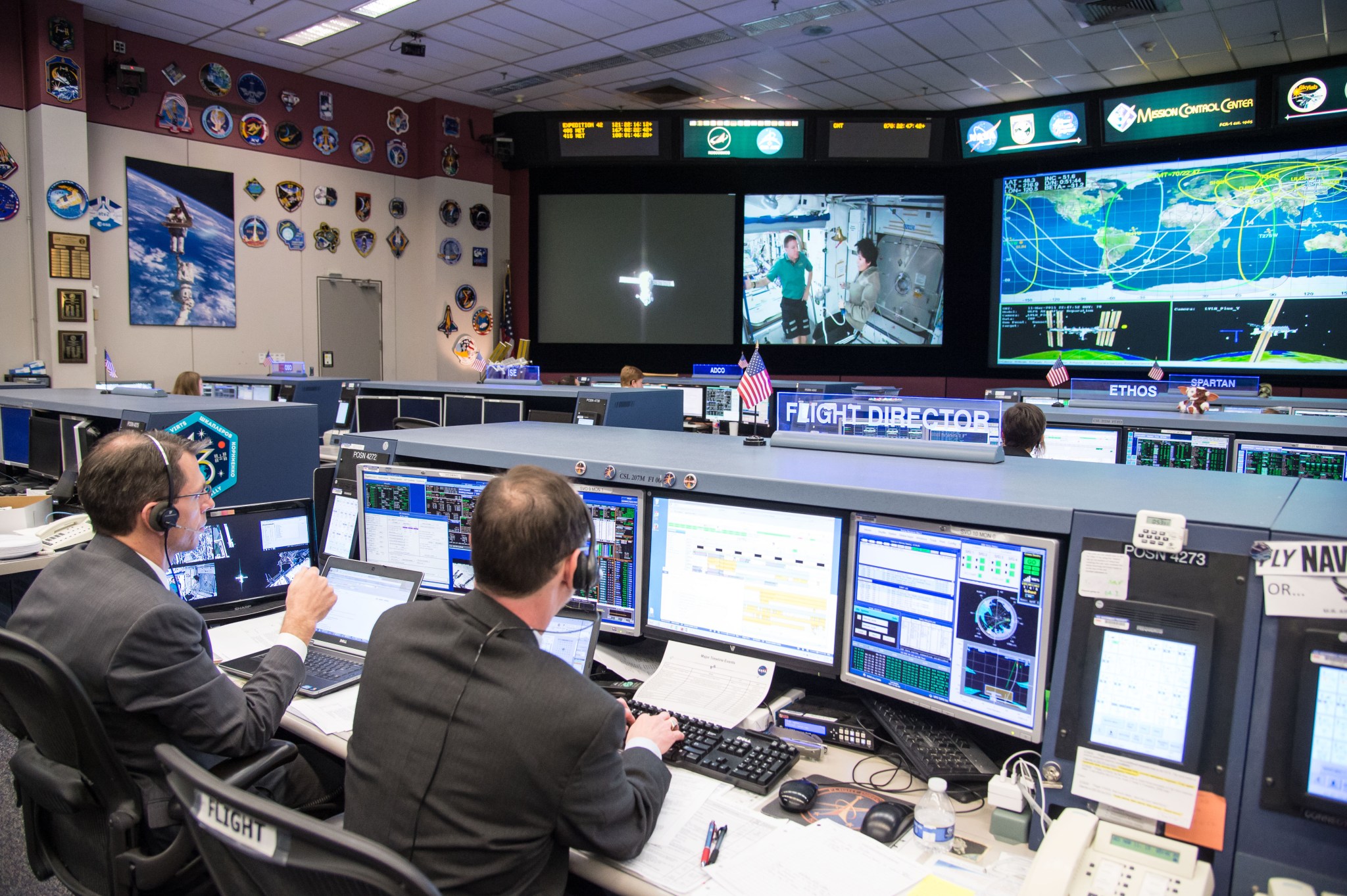Ground Facilities
United States of America: National Aeronautics and Space Administration (NASA)
NASA Headquarters (HQ)
NASA headquarters, in Washington, D.C., exercises management over the NASA Field Centers, establishes management policies, and analyzes all phases of the ISS program.
Johnson Space Center (JSC)
Johnson Space Center in Houston, directs the station program. Mission control operates the U.S. on-orbit segment (USOS) and manages activities across the station in close coordination with the international partner control centers. JSC is the primary center for spacecraft design, development, and mission integration. JSC is also the primary location for crew training.
Kennedy Space Center (KSC)
Kennedy Space Center, in Cape Canaveral, Fla., prepares the station modules and space shuttles for each mission, coordinates each countdown, and manages space shuttle launch and post-landing operations.
Marshall Space Flight Center (MSFC)
Marshall Space Flight Center’s Payload Operations and Integration Center (POIC) controls the operation of U.S. experiments and coordinates partner experiments aboard the station. MSFC oversaw development of most U.S. modules and the station’s Environmental Control Life Support System.
Telescience Support Centers (TSCs)
Telescience Support Centers around the country are equipped to conduct science operations on board the station. These TSCs are located at Marshall Space Flight Center in Huntsville, Ala.; Ames Research Center (ARC) in Moffett Field, Calif.; Glenn Research Center (GRC) in Cleveland; and Johnson Space Center in Houston.
The control centers of NASA are:
- NASA – Payload Operations and Integration Center (POIC), Marshall Space Flight Center in Huntsville, Ala.;
- NASA – Mission Control Center (MCC), Houston;
NASA’s Payload Operations Center serves as a hub for coordinating much of the work related to delivery of research facilities and experiments to the space station as they are rotated in and out periodically when space shuttles or other vehicles make deliveries and return completed experiments and samples to Earth.
The payload operations director leads the POIC’s main flight control team, known as the “cadre,” and approves all science plans in coordination with Mission Control in Houston, the international partner control centers and the station crew.
Russia: Roscosmos, The Russian Federal Space Agency
Roscosmos oversees all Russian human space flight activities.
Moscow Mission Control Center (TsUP)
Moscow Mission Control Center is the primary Russian facility for the control of Russian human spaceflight activities and operates the station’s Russian segment. It is located in Korolev, outside of Moscow, at the Central Institute of Machine building (TsNIIMASH) of Roscosmos.
Gagarin Cosmonaut Training Center (GCTC)
The Gagarin Cosmonaut Training Center (GCTC), at Zvezdny Gorodok (Star City), near Moscow, provides full-size trainers and simulators of all Russian station modules, a water pool used for spacewalk training, centrifuges to simulate g-forces during liftoff, and a planetarium used for celestial navigation.
Baikonur Cosmodrome
The Baikonur Cosmodrome in Kazakhstan is the chief launch center for both piloted and unpiloted space vehicles. It supports the Soyuz and Proton launch vehicles and plays an essential role in the deployment and operation of the station.
The control centers of Roscosmos are:
-
Roscosmos – Flight Control Center (TsUP), Korolev, Russia;
-
Roscosmos – Transport Vehicle Control Room, Korolev, Russia;
Canada: Canadian Space Agency (CSA)
Mobile Servicing System (MSS ) Operations Complex (MOC)
Located in Saint Hubert, Quebec, the MSS Operations Complex is composed of the following facilities:
- Space Operations Support Center (SOSC)
- MSS Operations and Training System (MOTS)
- Virtual Operations Training Environment (VOTE)
- Canadian MSS Training Facility (CMTF)
These facilities provide the resources, equipment and expertise for the engineering and monitoring of the MSS and provide crew training on Canadian systems.
Space Station Remote Manipulator System (SSRMS ) Design and Development
The SSRMS was designed and built for the CSA by MDA of Brampton, Ontario.
Payload Telescience Operations Centre (PTOC)
The PTOC in Saint Hubert supports real time operations for Canadian Payloads onboard the station.
The control centers of CSA are:
- CSA-Payloads Operations Telesciences Center, St. Hubert, Quebec, Canada;
- Canadian Space Agency Mission Control Center (CSA-MCC), Longueuil, Quebec, Canada
Europe: European Space Agency (ESA)
European Space Research and Technology Center (ESTEC)
The European Space Research and Technology Centre in Noordwijk, the Netherlands, is the largest ESA establishment, a test center and hub for European space activities. It has responsibility for the technical preparation and management of ESA space projects and provides technical support to ESA’s ongoing satellite, space exploration, and human space activities.
Columbus Control Center (COL-CC) and Automated Transfer Vehicle Control Center (ATV-CC)
Two ground control centers are responsible for controlling and operating the European contribution to the station program. These are the Columbus Control Centre and the Automated Transfer Vehicle (ATV) Control Center. The COl-CC, located at the German Aerospace Center (DLR), in Oberpfaffenhofen, near Munich, Germany, controls and operate the Columbus laboratory and coordinates the operation of the European experiments. The ATV-CC, located in Toulouse, France, on the premises of the French space agency, Centre national d’Etudes Spatiales (CNES), operates the European ATV during the active and docked mission phases of the ATV.
Guiana Space Center (GSC)
Europe’s Spaceport is situated in the northeast of South America in French Guiana. Initially created by CNES, it is jointly funded and used by both the French space agency and ESA as the launch site for the Ariane 5 vehicle.
European Astronaut Center (EAC)
The European Astronaut Centre of the European Space Agency is situated in Cologne, Germany. It was established in 1990 and is the home base of the 13 European astronauts who are members of the European astronaut corps.
User Centers
User Support and Operation Centers (USOCs) are based in national centers distributed throughout Europe. These centers are responsible for the use and implementation of European payloads aboard the ISS.
The control centers of ESA are:
- ESA – Columbus Control Center (Col-CC), Oberpfaffenhofen, Germany (near Munich);
- ESA ATV – Control Center, Toulouse, France;
- ESA – European User Support Operations Centers:
- CADMOS, Toulouse, France
- MARS, Naples, Italy
- MUSC, Cologne, Germany
- B-USOC, Brussels, Belgium
- E-USOC, Madrid, Spain
- DAMEC, Odense, Denmark
- BIOTESC, Zurich, Switzerland
- ERASMUS, Noordwijk, The Netherlands
Japan: Japan Aerospace Exploration Agency (JAXA)
In addition to the JAXA headquarters in Tokyo and other field centers throughout the country, Tsukuba Space Center and Tanegashima launch Facility are JAXA’s primary ISS facilities.
Tskuba Space Center (TKSU)
JAXA’s Tsukuba Space Center (TKSU), located in Tsukuba Science City, opened its doors in 1972. The TKSC is a consolidated operations facility with world-class equipment, testing facilities, and crew training capabilities. The Japanese Experiment Module (JEM) or “Kibo,” which translates in English as “Hope,” was developed and tested at TKSC for the station. The Kibo Control Center plays an important role in control and tracking of the Japanese laboratory.
Tanegashima Space Center (TNSC)
The Tanegashima Space Center is the largest rocket launch complex in Japan and is located in the south of Kagoshima Prefecture, along the southeast coast of Tanegashima. The Yoshinobu launch complex is on site for H-IIA and H-IIB launch vehicles. There are also related developmental facilities for test firings of liquid- and solid-fuel rocket engines.
The control centers of JAXA are:
- Japan Experiment Module Mission Control (JEMMC), Tsukuba-shi, Ibaraki, Japan;
Research and Technology Facilities
Managing the international laboratory’s scientific assets, as well as the time and space required to accommodate experiments and programs from a host of private, commercial, industry and government agencies nationwide, makes the job of coordinating space station research critical.
Teams of controllers and scientists on the ground continuously plan, monitor and remotely operate experiments from control centers around the globe. Controllers staff payload operations centers around the world, effectively providing for researchers and the station crew around the clock, seven days a week.
State-of-the-art computers and communications equipment deliver up-to-the-minute reports about experiment facilities and investigations between science outposts across the United States and around the world. The payload operations team also synchronizes the payload time lines among international partners, ensuring the best use of valuable resources and crew time.



























